Daily brewing | reveal the taste of the coffee shop and the Sakuran flushed at home.
Professional coffee knowledge exchange more coffee bean information please follow the coffee workshop (Wechat official account cafe_style)
It seems easy to make [Sidamo Sakuran] taste good, but in fact, there are a lot of details to pay attention to, and each factor will affect the taste. With the same bean, why can others make it taste good, but they still can't get the same taste with the same process? Let's talk about it. What factors will affect it?

1, freshness
Many people choose ground coffee powder for convenience, or grind a lot at one time and put it in the refrigerator. In fact, "fresh grinding" is the first condition of good coffee, it ensures the taste of coffee.
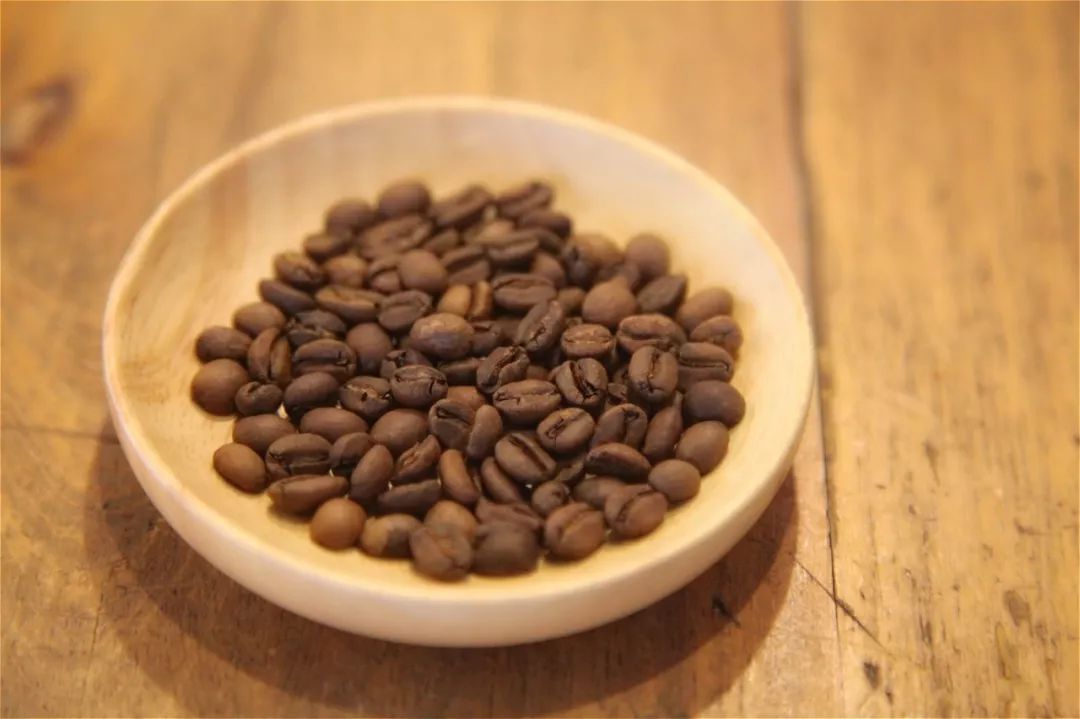
When the coffee is ground into powder, it will speed up the oxidation rate of the coffee powder, and if the aroma is lost seriously, the flavor of the natural coffee will disappear. Freshness greatly affects the flavor and taste of the finished product. All food will rot with the passage of time, coffee will gradually lose its flavor and aroma, there will be a process of acidification and deterioration. The main causes of coffee rancidity are oxygen, humidity and sunlight.

The fresh raw beans coffee beans, the more mellow sweet, pleasant smell. Sweetness, bitterness, acidity and thickness are well coordinated, with multiple levels and rich aftertaste. However, the longer the coffee is placed, it is easy to have an objectionable smoky smell, and the oil also becomes mixed and unpalatable due to deterioration, resulting in a strange charm, so it is best to choose the beans with the best drinking period (7-10 days after baking) and brew them within 5 minutes after grinding. This time we chose Huakui, which was baked on August 1, to cook.
2, degree of grinding
Ideal for grinding, most coffee particles are of the same size and shape, resulting in better uniformity when brewing. But in fact, no matter what kind of grinder you use, you can't do this. No matter how high-end the grinder is, the coffee powder will inevitably contain a little thicker particles and too fine powder. These too thick or too fine particles, if the quantity is small, the problem is not serious. If the amount is large, the phenomenon of "partial particle extraction is not complete, but some dust extraction is excessive" will appear.
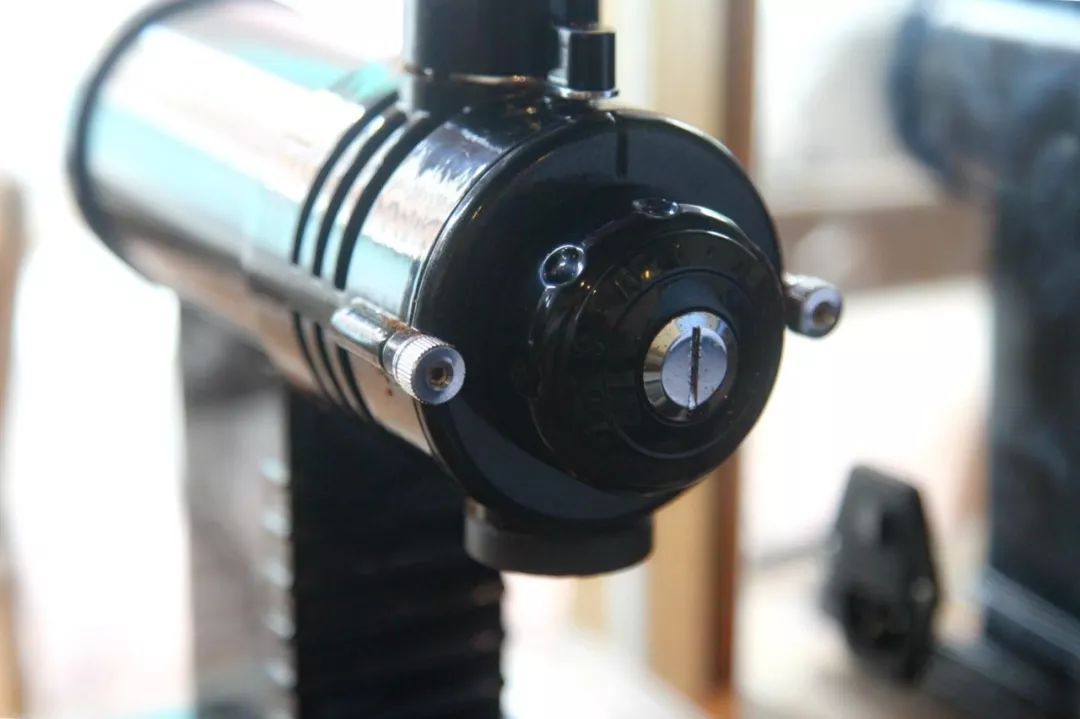
Why is there such a phenomenon? Large particles of coffee powder dissolve slowly, at this time the extraction is not finished, the good taste does not come out, the extraction will be insufficient. Small particles of coffee powder dissolve quickly, have already been extracted, and begin to release bad taste crazily, which will be over-extracted. To achieve balance, it is necessary to make coffee particles of the same size as possible, the easiest way is to use a powder sieve to screen out the fine particles.
2, what is the suitable thickness of coffee beans for hand-brewing coffee?
Generally speaking, the thickness of coffee powder can be divided into five grades: coarse powder, medium powder, medium and fine powder, very fine powder.
(1) medium fine powder, suitable for shallow baked beans, small Fuji ghost teeth 3.5, the size of white granulated sugar (the most common white granulated sugar in the supermarket, a little bigger than that).

(2) medium flour (suitable for medium-baked beans, small Fuji Ghost teeth 4), granulated sugar (the largest granule of white granulated sugar seen in the supermarket, most of the time is this thickness), medium powder is slightly thicker than medium and fine powder, but not as large as coarse powder.

(3) coarse flour, suitable for medium and deep baked beans, small Fuji ghost teeth 4.5
Coarse powder > sugar (sugar larger than the largest granule of sugar that can be seen on the market)
3, cloth powder
After the coffee powder is poured into the drip filter cup, it is not advisable to shake it gently to make it flat, or to shake it too hard and shake too much. The leveling of the noodles provides the basis for steaming and injecting water, so that the coffee powder can absorb water and exhaust evenly.

4, water quality
98% of a cup of hand-brewed coffee is water. Water quality is divided into "soft" and "hard". The hardness of water refers to the content of salt dissolved in water, generally taking the content of calcium and magnesium salts as the standard, the greater the content, the greater the hardness. Hard water has more carbonates, which may also lead to more bitter taste of coffee. Generally speaking, the water released from the faucet is hard and tastes worse.

It is not recommended to use pure water to make coffee. Coffee made with pure water often tastes dull and lacks a sense of hierarchy. But do not use mixed brand mineral water or mixed brand barreled water, once there is a peculiar smell in the water, it will be more obviously magnified and reflected in the coffee, the more appropriate choice is to use filtered water.
5, water temperature
Water temperature is also an important index that affects the taste of coffee. Too high water temperature will make coffee bitter, and high temperature will coke the fine coffee powder quickly. Generally speaking, [charred coffee] is used to accurately describe the defective coffee extracted by high temperature extraction.
If the water temperature is too low, it will make the sour taste stronger, and the extracted coffee will have a little raw and sour taste. But low water temperature also has a way to make good coffee, which is to prolong the soaking time of water and coffee powder, such as iced coffee.
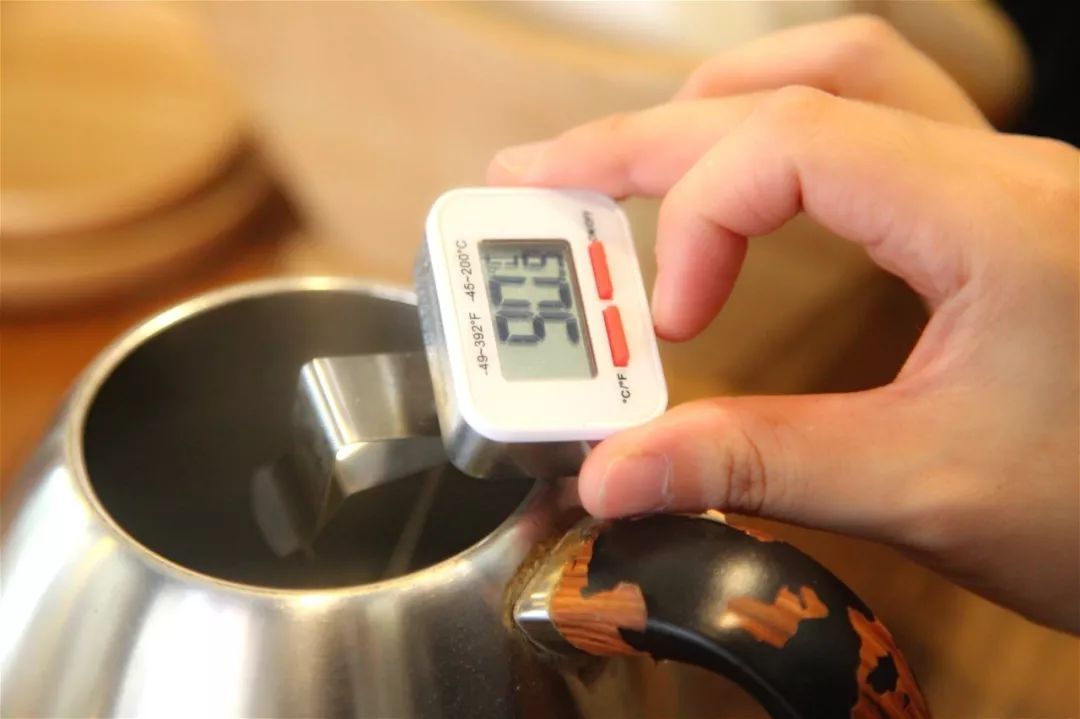
It is suggested that medium and shallow roasted coffee beans should be extracted at a water temperature of about 90-92, and deep-roasted coffee beans should be extracted at a temperature of 86-88 degrees.
6, current
[steaming and water injection]:
Coffee aroma and hierarchy can be released, the key lies in water injection, the need to use a penetrating water column. If three-stage extraction is commonly used, there will also be some wrong methods:
(1) uneven water injection: the water column is suddenly thin and thick, the circle is not round, and the water injection is asymmetrical, resulting in water flooding through the filter paper where there is more water injection; coffee powder cannot be completely wet where there is less water, resulting in excessive extraction of most parts of water injection powder and insufficient extraction of powder with less water injection.
(2) Water injection is too gentle: when injecting water, there is not enough strength to let the water penetrate the powder layer on the surface, but it moistens the surface, so that the water can only slowly seep into the deep layer. At this time, the time for the steaming water to seep into the bottom layer will be prolonged, and some of the water will spread from the surface and flow away from the ribs at the edge. If the coffee particles are close to each other, the penetration rate of water will be very slow, and it is easy to diffuse. If there is too much powder, the powder layer will be thick. If the penetration is not strong enough, the water will stay on the surface.
What is the better steaming state?

When hot water is poured in, the gas in the coffee powder expands when heated (when the coffee powder is enlarged, it will look like a honeycomb, with many gaps). After the gas expansion, it will begin to discharge the excess gas, which will cause the coffee powder and hot water to form an expanding hill on the outside. At the same time, in addition to the discharge of gas from the inside of the coffee powder, hot water also slowly seeps into the inside of the coffee powder so that some soluble substances in the coffee powder begin to dissolve and form a high concentration of coffee liquid.

In the final stage of steaming, because the gas is almost discharged, the whole temperature decreases, and some undischarged air begins to shrink slightly, so from the outside, the hill will gradually dry or slightly crack and collapse, which also means that the steaming is complete. This is the time point when the water is added in the first stage.

The steaming time is about 30 seconds. Let the coffee powder absorb water, and the coffee powder that absorbs enough water will expand and produce another aroma. The longer the steaming time, the stronger the coffee flavor. Usually, the amount of steaming water is twice that of coffee powder. For example, 15g coffee powder can be poured to about 30g water to make the coffee powder absorb enough water.
[water injection in the first paragraph]:
(1) inject penetrating water
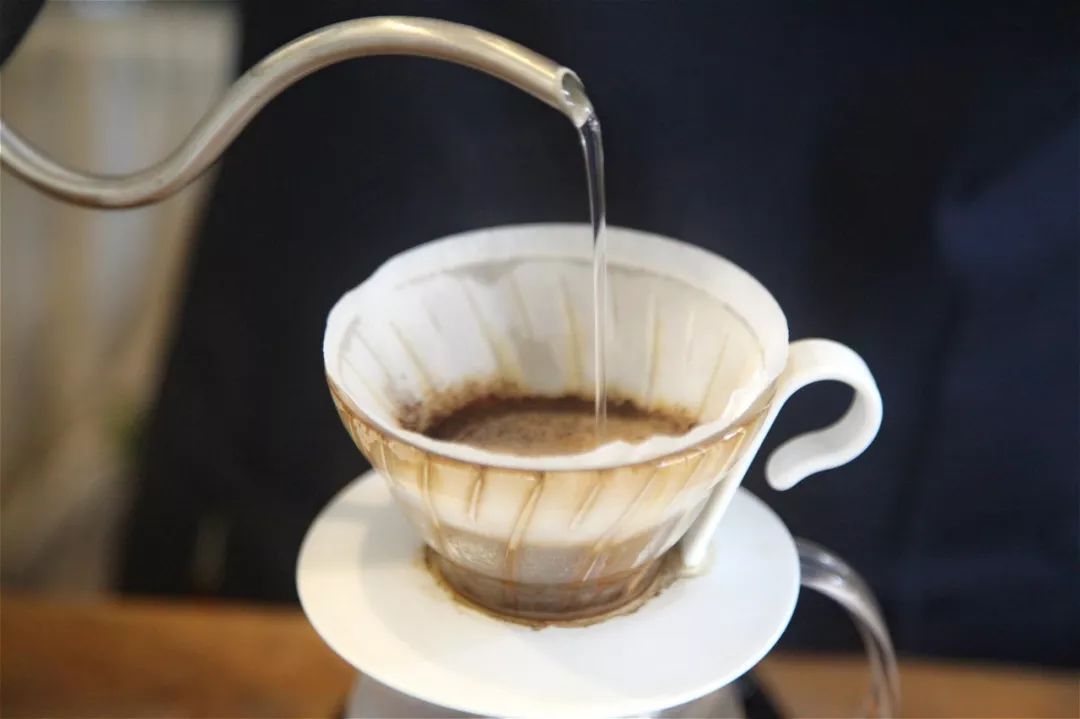
Generally speaking, a penetrating water column means that during the process of water supply, it is expected that every time the water supply is supplied, the water column can pass through the powder layer that has already been drained before, so that the lower non-absorbent particles begin to draw water. Penetrating water is not the higher the water column, the better. The higher the height of the water column, the greater the impact of the water flow, and the difficulty of stable circling will also increase, resulting in greater disturbance in the extraction process, unable to make coffee powder uniform extraction, resulting in increased astringent flavor.
If the height of the water column is too low, the hand punch can easily hit the filter cup, but if you use low water injection, the speed of the circle should not be too slow or stop, because it will cause the coffee powder at the bottom to roll up. The water with penetrating force is thick at the top and thin at the bottom, the water coming out of the spout should be wide, and the end of the tail end is sharp.
(2) the size of the circle

The size of the coil will also affect the extraction rate. If you only circle the middle (about the size of an one-dollar coin), it will cause the surrounding coffee powder, which cannot be effectively and completely dissolved; if it is wound to the edge of the filter cup, the water will easily flow directly into the coffee pot without passing through the coffee powder, resulting in insufficient extraction of the whole cup. When injecting water, circle outward from the center, the water column can keep about 1 centimeter away from the filter cup as far as possible.
(3) the speed of the circle
If the circle is too fast, it will cause great disturbance; if it is too slow, the extraction time will be too long, resulting in the bitter taste behind. Take medium and light baked beans as an example, generally speaking, a little faster, the taste will be brighter; a little slower, the taste will be softer.
[second stage water injection]

It is also injected with penetrating water, the winding speed and the amount of water injection are increased, and the water level of water injection is higher than that of the first section, and the water level is maintained at a certain rate of decline by water pressure. For example, 225g of water can be interrupted when the water injection reaches about 120-125g, and wait until the water level on the coffee powder drops by 1GP3 or half before continuing to pour water, which can adjust the flavor of hand-brewed coffee and make it stronger. Therefore, by cutting off the water, you can change the taste of hand-brewed coffee and adjust the extraction rhythm.

Why would you do that? How to judge the second stage water injection by the speed of water level falling?
When the water supply reaches the bottom, the particles at the bottom begin to expand, and as the water at the bottom runs out, the whole powder layer decreases. When the coffee powder particles do not absorb much water at first, because the coffee powder particles are lighter, most of the coffee powder will float on the water surface, and as the water level drops, the surface will look like a bowl or a U-shaped with a large opening.
The speed at which the water level drops represents the amount of draught of coffee powder particles. Because the coffee powder in the filter cup is lighter than water at first, the coffee powder particles will sink more slowly than the water flow, and when the coffee powder eats more water and the weight becomes heavier, the coffee powder particles will quickly reach the bottom of the filter cup and cause blockage, thus delaying or even stagnating the decline of the water level.

How many states are there when the water level falls?
When the water level falls too fast, there is no need to add water. Because when the current falls faster than the particles, it means that the water is scouring the coffee powder particles, so that the coffee powder particles are not in a static state.
When the water level drops slowly, it means that coffee powder particles begin to deposit at the bottom, causing blockage and causing the water level to fall slowly.
When the water level stops falling, it means that the bottom is completely blocked, and the coffee powder particles are also soaked in the water, and once this situation continues for too long, the bitter taste will follow.
Therefore, at the time point of adding water, when the water level is delayed or the water level is no longer falling, the penetrating water begins to be added.
D, extraction is over.

The time is about 2 minutes, observe the powder bed, to achieve a more uniform extraction state is the filter cup level without hanging wall, for moderate baking moderately deep I will choose the powder hanging wall that looks like a small pit or a slight couch in the middle.
For example, how do we cook Sidamo Sakuran?

Filter cup: Hario v60
Scale: little Fuji 3.5
Water temperature: 90 ℃, ratio of water to flour 1:15
Flushing and cooking techniques: 25 g of water is injected for steaming for 30 seconds, vertical water injection and slow circle to 120 grams of water are carried out in sections, and larger water injection ends at 226 grams.
Total time: 2 minutes 05 seconds
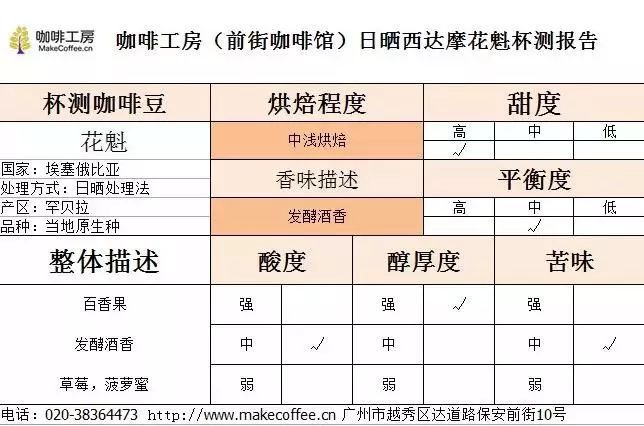
The first part smells obvious melon aroma, strawberry jam, the mouth with jackfruit-like soft acidity, middle strawberry berry flavor emerged, there are some sugar back sweet, rich layers.

Important Notice :
前街咖啡 FrontStreet Coffee has moved to new addredd:
FrontStreet Coffee Address: 315,Donghua East Road,GuangZhou
Tel:020 38364473
- Prev

Daily brewing | A cup of coffee with balanced taste and grease
Professional coffee knowledge exchange more information about coffee beans Please follow the coffee workshop (official Wechat account cafe_style) when it comes to the oil in coffee, what will come to mind? Generally speaking, the first impression should be the large layer of "Crema" floating above the Italian concentrate. It is often said that that layer of Crema is an important source of aroma and taste, but "Taguchi Guard"
- Next
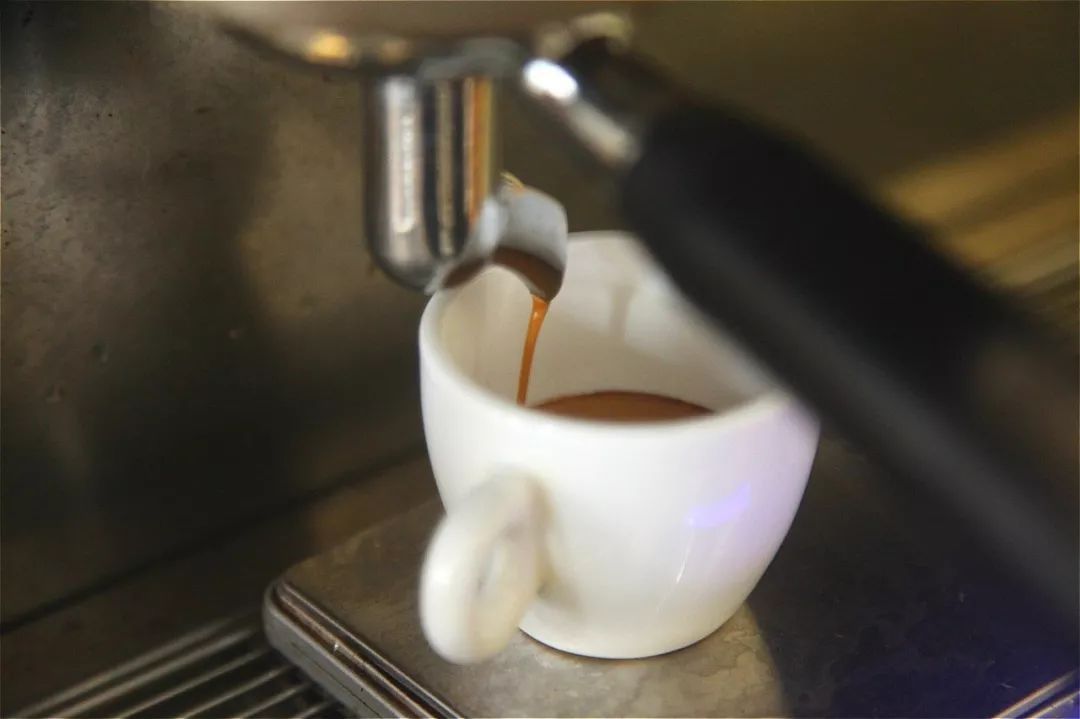
What is the channel effect? What are the effects? How to judge whether espresso is too good?
Professional coffee knowledge exchange more coffee bean information please follow the coffee workshop (Wechat official account cafe_style) A good espresso is the basis of all espresso, espresso can magnify the advantages of coffee beans, bad concentration will of course infinitely magnify the disadvantages. So how to make it correctly
Related
- What is the meaning of lactic acid fermentation with coffee bean treatment?
- How to judge the state of foam by sound?
- How does the latte pull out the unicorn pattern? Come to get for a little trick to improve the flower pull!
- Will flower pulling affect the taste of the latte?
- Do you know the history of coffee?
- The difference between honey treatment and sun washing what is raisin honey treatment?
- What kind of milk can a novice use to make coffee foam to keep the foam longer? The correct method and skills of milking tutorial sharing
- Why do washed coffee beans taste sour? Flavor characteristics of washed Coffee
- Introduction to the skill of how to practice the size and height of water injection around the circle of hand-brewed coffee
- How do beginners practice coffee flower drawing from scratch?

